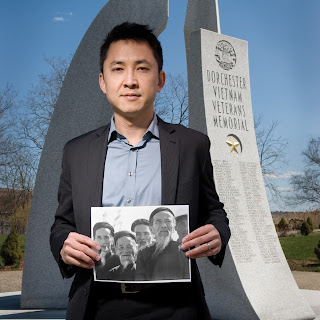Before the Flood and Q&A with Dr. Jess Adkins
I had the opportunity to attend Poly's screening of the documentary Before the Flood and the Q&A session that followed. This documentary demonstrated different effects of climate change around the world and brought up actions our society could take to prevent the demise of endangered species, ecosystems, and native communities across the planet.
The narrator, Leonardo DiCaprio, travels to different parts of the world to examine how climate change has affected people’s lifestyles and their surroundings. He talks to experts and influential figures who are working toward a sustainable future, and he also addresses the political nature of climate change denial in the White House.
DiCaprio first visits Baffin Island in the Canadian Arctic, where he sees first-hand the detrimental effects of climate change on the ice caps. He is accompanied by Dr. Enric Sala, the National Geographic Explorer-in-Residence, and Jake Awa, an Arctic guide. Sala tells DiCaprio, “In 2040, you will be able to sail over the North Pole. There will be no ice left.”
Later in the documentary, DiCaprio visits former president Barack Obama in the White House to discuss the United Nations Framework Convention on Climate Change Paris agreement and how the White House is addressing climate change. Regarding the Paris agreement, Obama says, “I was happy that we put the architecture in place, but the targets that were set in Paris were nowhere near enough for what the scientists tell us we have to do eventually to solve this problem.” I agree.
DiCaprio also stops by Tesla’s Gigafactory to watch robots create lithium-ion batteries from solar energy. When DiCaprio is discussing the possible transition from fossil fuels to renewable energy with Tesla’s CEO Elon Musk, Musk estimates that it would take 100 gigafactories to transition the entire world to solar energy. “The only way to encourage this is with the carbon tax,” he says.
After the documentary, Adkins, Professor of Geochemistry and Global Environmental Science at Caltech, answered questions from the audience. Adkins obtained his bachelor’s degree from Haverford and his Ph.D. from MIT. His research at Caltech entails geochemical investigations of past climates as well as chemical oceanography and metals as tracers of environmental processes.
Questions ranged from the politicization of environmental science to how individuals could contribute to the environmental movement. When I asked about the possibility of the reversal of climate change, Adkins replied that most effects could reverse with time, however, some of the devastation was irreparable. “There are tipping points in the systems. For example, if Greenland goes away, it is not coming back. The time and energy that climate systems spent to build the Greenland ice sheet up in the first place is much larger than what is available to the system,” he told me.
This stuck in my mind as I left the room. Although what he said about the Greenland ice sheets was devastating, the fact that he thought that most effects were reversible surprised me. I thought that coral bleaching destroyed the underwater habitats forever and that deforestation was permanent. Even though we can never bring old ecosystems back, I'm excited to see what happens to the environment as (or if) we transition to sustainable energy. I'm excited for the possibilities of the future.











